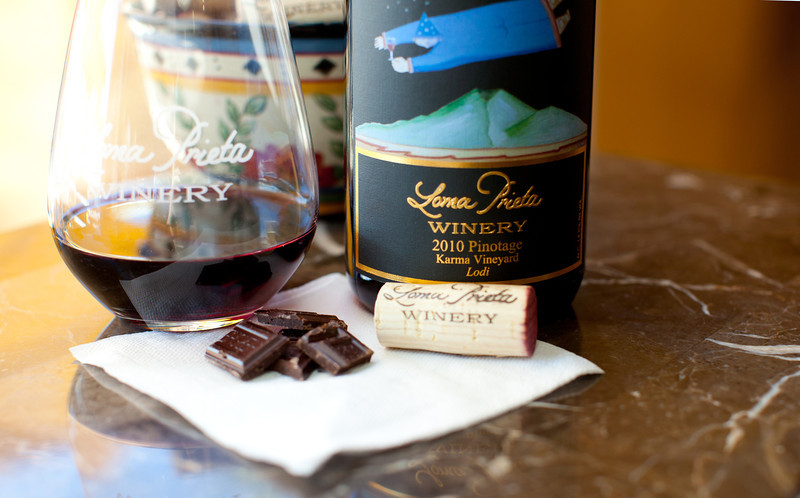Pinotage is a very rare grape in California
There are only approximately 52 acres planted in the whole state, according to the CSDA 2019 crop report. Compare this to 95k acres of Cabernet in the ground, and you can grasp the concept of “scarce.”
The original Loma Prieta Winery owners, Amy and Paul Kemp, planted their 3-acre estate vineyard to Pinot Noir, Merlot, and Cabernet. Then Paul discovered Pinotage in a Lodi vineyard (Amorosa) from which he was sourcing Viognier. One taste and he was convinced this was the grape star to which he should hitch his proverbial wagon. In 2010, he grafted Pinotage onto 500 of their existing Cabernet Sauvignon and Merlot plants. Then, in early 2012, he grafted all the Pinot Noir vines to Pinotage, making Loma Prieta the only vineyard in the Santa Cruz Mountains Appellation to grow solely Pinotage.
Their first harvest off the estate was approximately 2 tons of Estate Pinotage in 2012, which was bottled in August of 2013. It has since become a cult favorite. Paul founded the nation’s first “Pinotage Only” wine club in 2010: members get first dibs on the very limited Estate Pinotage and a special blend he created called “Bodo’s Blend,” named for the magical character, Bodo, who appears on the wine label. At the suggestion of his wife, Amy, Loma Prieta made the first sparkling Pinotage in North America in 2013, and it has drawn people to the tasting room ever since.
Pinotage is a grape that was developed by a Stellenbosch University professor in South Africa around 1925 to help extend the range of vines on the Cape. It is a cross between Pinot Noir and Cinsault, at that time known as Hermitage, hence the name. The climate of South Africa was a bit brutal on the thin-skinned Pinot Noir grape, but the thick-skinned Hermitage helped it adapt. Pinotage was not commercially planted until 1941, but it took off thereafter. Pinotage has been proudly claimed by South African producers as their very own national grape, and most wineries there grow it. In fact, it’s the most widely planted red there.
Because it is so rare in California, and unless you’ve been to South Africa or Europe, most first time visitors to the winery have neither heard of Pinotage nor tasted it. After the first sip or two and learning a bit about its history, many people are enchanted by this unique, medium-bodied, food-friendly, fruit-forward wine, known for its easy-drinking tannins. Unlike Bordeaux varieties, which are prized for their grippy tannins that take years to soften, Pinotage is easy to drink early on its life cycle. It has been the winery’s best-seller since 2009, despite the fact that we produce many other Gold Medal wines (Merlot, Petite Sirah, Cabernet Sauvignon, and Pinot Noir). Come taste and find out why.
